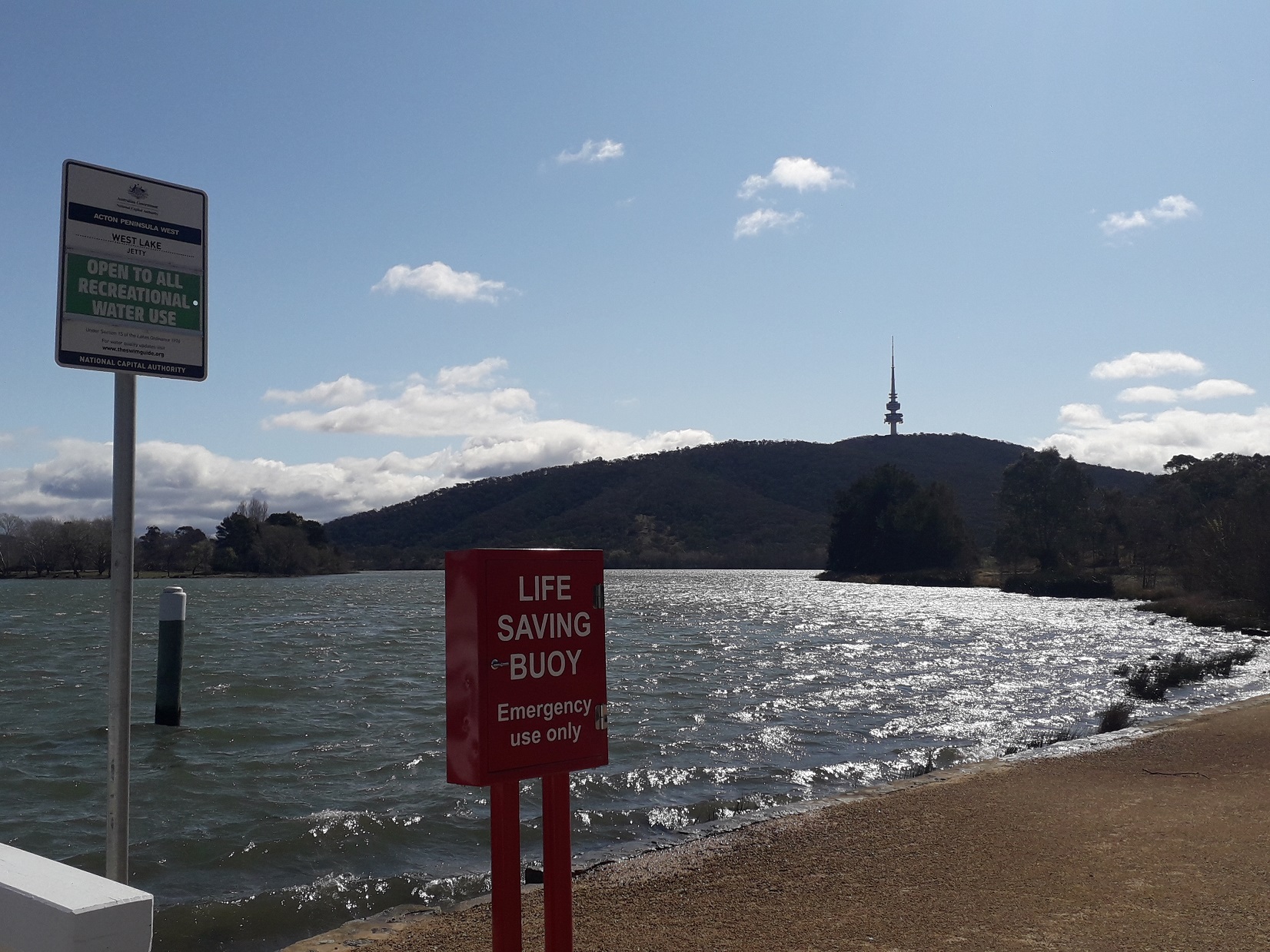Swim safe: how to check water quality before you dive in

Spending time in and around Canberra’s lakes and rivers is the perfect way to enjoy a hot summer afternoon. But on occasion, there can be a good reason to avoid having a dip.
Ripon Adhikary*, a PhD student at the National Centre for Epidemiology and Population Health is investigating the links between recreational water quality and disease, explains the potential health risks from lakes and rivers, and how to stay safe this summer.
What are the health risks associated with freshwater?
The lakes and rivers around Canberra are generally safe for any type of recreation and physical exercises, with designated sites for swimming. On occasion, however, microorganisms (bacteria, viruses, and algae) are present in high enough concentrations that contact with the water, particularly by swallowing or contact with your face, may make you unwell. Illness may occur even without direct contact to contaminated water through inhalation of water droplets and aerosols, particularly, where toxic cyanobacterial bloom exists at a higher concentration. The most commonly reported health problems are gastrointestinal illness, skin and ear infections, respiratory illness, and eye-related infections.
How can I check local water quality?
Before you head off for a swim, go online and check local water quality. The ACT Government monitors swimming spots weekly along Lake Ginninderra, Lake Tuggeranong, Molonglo River, Murrumbidgee River Corridor, and Paddy’s River, while the National Capital Authority monitors Lake Burley Griffin. Signs are also located at some of these places.
These websites will let you know if the water is safe for primary contact activities (i.e. where your whole body or face is immersed in water, such as swimming, water skiing, or white-water kayaking), or secondary contact activities (where only your arms and legs get wet, such as fishing, boating, or rowing). The vast majority of adverse health outcomes are reported for primary contact recreation.
It is also important to visually check the water for surface scum or algal blooms, and if they are present, contact with the water should be avoided. Heavy rain can result in pollutants entering our waterways and sewage overflows, and you should avoid contact with the water for several days after the heavy rain event.
What about my dog?
Water quality testing and guidelines are intended for humans, not dogs. Dogs are also likely to play in small urban ponds or lakes that are not part of the water quality monitoring program, and drink the water, which increases their exposure. Therefore it is important that owners visually check the water for scum and algal blooms, and prevent their dogs from playing in water after heavy rain events.
Should I be worried?
The short answer is no. Lakes and rivers in Canberra are generally safe for recreational activities. Checking water monitoring advice, visually assessing the water for signs of scum or algae, and avoiding freshwater bodies after heavy rain, can help you stay safe and make the most of Canberra’s water.
Our lakes and rivers are a key feature of Canberra’s urban landscape for exercise and relaxation. Enjoying our time in and around these urban waterways is a wonderful way of connecting with nature and each other.
*Ripon Adhikary and colleagues recently published a systematic review on the risk of human illness from recreational exposure to microbial pathogens in freshwater bodies.
